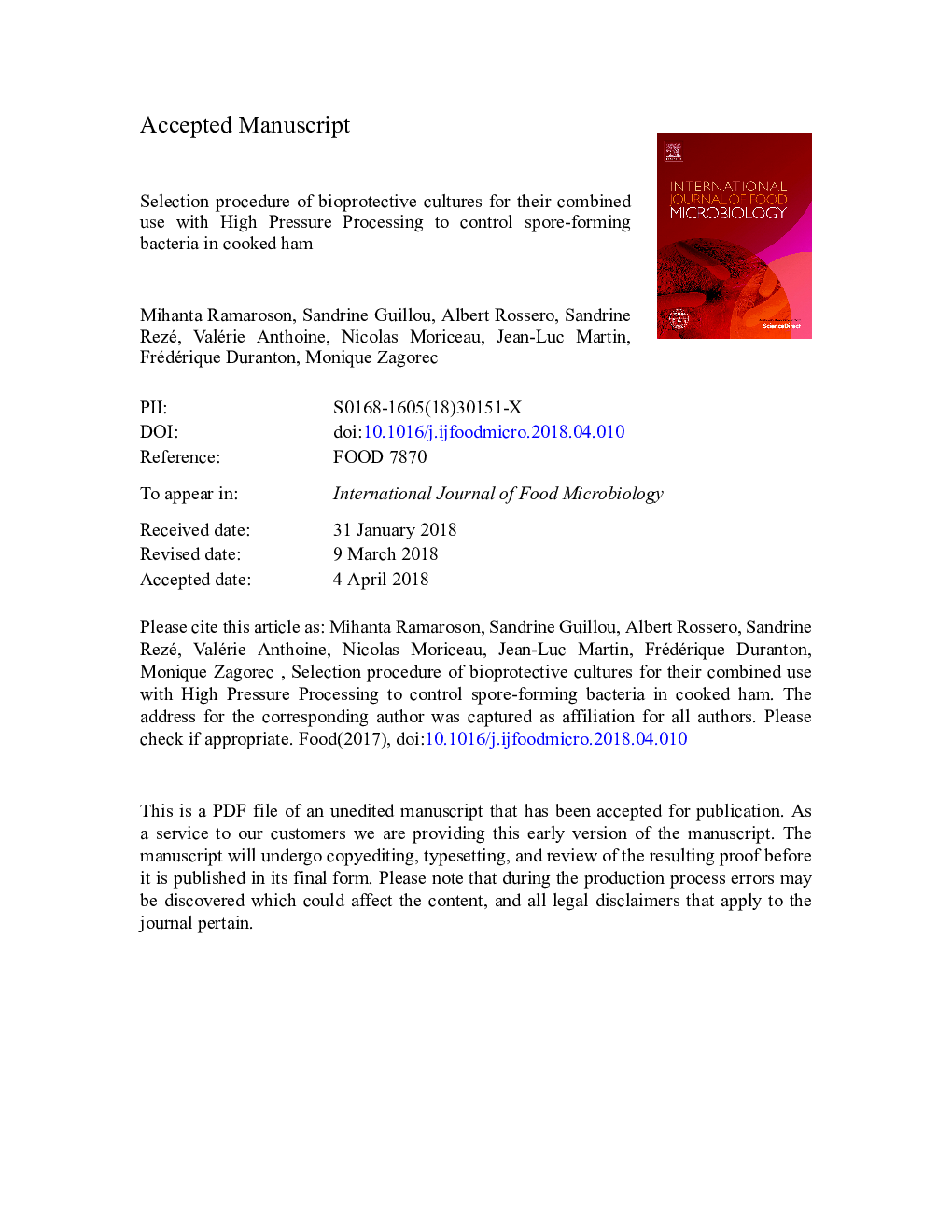| Article ID | Journal | Published Year | Pages | File Type |
|---|---|---|---|---|
| 8844192 | International Journal of Food Microbiology | 2018 | 43 Pages |
Abstract
High Pressure Processing (HPP) and biopreservation can contribute to food safety by inactivation of bacterial contaminants. However these treatments are inefficient against bacterial endospores. Moreover, HPP can induce spore germination. The objective of this study was to select lactic acid bacteria strains to be used as bioprotective cultures, to control vegetative cells of spore-forming bacteria in ham after application of HPP. A collection of 63 strains of various origins was screened for their antagonistic activity against spore-forming Bacillus and Clostridium species and their ability to resist to HPP. Some safety requirements should also be considered prior to their introduction into the food chain. Hence, the selection steps included the assessment of biogenic amine production and antibiotic resistance. No strain produced histamine above the threshold detection level of 50â¯ppm. From the assessment of antibiotic resistance against nine antibiotics, 14 susceptible strains were kept. Antagonistic action of the 14 strains was then assessed by the well diffusion method against pathogenic or spoilage spore-forming species as Bacillus cereus, Clostridium sp. like botulinum, Clostridium frigidicarnis, and Clostridium algidicarnis. One Lactobacillus curvatus strain and one Lactococcus lactis strain were ultimately selected for their widest inhibitory spectrum and their potential production of bacteriocin. A Lactobacillus plantarum strain was included as control. Their resistance to HPP and ability to regrow during chilled storage was then assessed in model ham liquid medium. Treatments of pressure intensities of 400, 500, and 600â¯MPa, and durations of 1, 3, 6, and 10â¯min were applied. After treatment, cultures were incubated at 8â¯Â°C during 30â¯days. Inactivation curves were then fitted by using a reparameterized Weibull model whereas growth curves were modelled with a logistic model. Although the two Lactobacillus strains were more resistant than L. lactis to HPP, the latter was the only strain able to regrow following HPP. The absence of biogenic amine production of this strain after growth on diced cube cooked ham was also shown. In conclusion this L. lactis strain could be selected as representing the best candidate for a promising preservative treatment combining biopreservation and HPP to control spore-forming bacteria in cooked ham.
Related Topics
Life Sciences
Agricultural and Biological Sciences
Food Science
Authors
Mihanta Ramaroson, Sandrine Guillou, Albert Rossero, Sandrine Rezé, Valérie Anthoine, Nicolas Moriceau, Jean-Luc Martin, Frédérique Duranton, Monique Zagorec,
